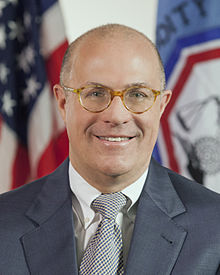This article originally appeared at techfreedom.org.
Today, the D.C. Circuit Court of Appeals stayed, for the second time, an FCC Order attempting to lower prison payphone phone calling rates. Back in 2003, Martha Wright had petitioned the FCC for relief, citing the exorbitant rates she was charged to call her incarcerated grandson. Finally, in 2012, the FCC sought comment on proposed price caps. In 2013, when Commissioner Mignon Clyburn took over as acting chairman, she rushed through an orderthat implemented rate-of-return regulation, a different approach on which the FCC had not yet sought public comment.
“Once again, the D.C. Circuit has reminded the FCC that good intentions are not enough,” said Berin Szoka, President of TechFreedom. “The FCC must follow basic requirements of administrative law. When it fails to do so, all its talk of protecting consumers is just that: empty talk.”
When the FCC issued its 2013 order, TechFreedom issued the following statement:
If justice delayed is justice denied, the FCC has once again denied justice to the millions of Americans and their families who pay far too much for prison payphone calls. The FCC’s elaborate system of price controls was not among the ideas on which the FCC sought comment last December, nor is it supported by the record. Thus, today’s long-overdue order will very likely be struck down in court — and the Commission will have wasted nine years sitting on Martha Wright’s 2003 payphone justice petition, nine months proposing an illegal solution, and who-knows-how-long litigating about it — only to wind up right back where we started, with payphone operators paying up to two-thirds of their revenue in kickbacks to state prisons, in exchange for the monopoly privilege of gouging a truly captive audience.
This is just the latest example of the FCC’s M.O. of “Ready, Fire, Aim.” The FCC consistently dawdles, then suddenly works itself up into a rush to regulate in ways that are either illegal or unwise — and usually both. Once again, good intentions, the desire to make headlines, disregard for basic principles of legal process, and a deep-seated ideological preference for returning to rate-of-return price controls, have triumphed over common sense, due process and, sadly, actually helping anyone.
In January 2014, the appeals court stayed key provisions of the order. The FCC then went back to the drawing board and, in October 2015, issued a second report and order and third NPRM that, among other things, established price caps for inmate calling services. Affected service providers challenged the order and sought a stay from the D.C. Circuit, which is granted only if, as the court said here, “petitioners have satisfied the stringent requirements for a stay pending court review,” which means showing a strong likelihood of success on the merits.
“The stay issued by the D.C. Circuit isn’t a certain death knell for the inmate calling order, but it certainly casts a grim pall over the order’s future,” said Tom Struble, Policy Counsel at TechFreedom. “This FCC has proven more than willing to tout noble goals to justify its procedural shortfalls, but the courts are less willing to bless such an outcome-driven approach. The rules for administrative procedure are there for a reason, and agencies can’t simply disregard them when it suits their interests. If something is worth doing, they should take the time to do it right.”
“It’s worth noting that Judge Tatel was among the three judges voting for today’s stay,” concluded Szoka, noting that Tatel also sits on the D.C. Circuit panel hearing challenges to the FCC’s Open Internet Order. “Even though today’s stay order addresses unrelated issues, it may suggest that the D.C. Circuit is taking a harsher look at the FCC’s procedure, and while the court didn’t grant an initial stay in the challenge to the Open Internet Order, the FCC could still lose on the merits of that case when it comes to the threshold question of whether it provided adequate notice of Title II reclassification, and rules that went well beyond ‘net neutrality.’ If so, the court might simply kick the matter back to the FCC and set the stage for a fourth court battle over the key legal questions. It’s anyone’s bet as to which issue, prison payphones (started in 2003) or net neutrality (started in 2005) the FCC will actually manage to resolve first, after more than a decade of heated fulmination exceeded only by the FCC’s incompetence.”
 As “software eats the world,” the reach of the Digital Revolution continues to expand to far-flung fields and sectors. The ramifications of this are tremendously exciting but at times can also be a little bit frightening.
As “software eats the world,” the reach of the Digital Revolution continues to expand to far-flung fields and sectors. The ramifications of this are tremendously exciting but at times can also be a little bit frightening.

 The Technology Liberation Front is the tech policy blog dedicated to keeping politicians' hands off the 'net and everything else related to technology.
The Technology Liberation Front is the tech policy blog dedicated to keeping politicians' hands off the 'net and everything else related to technology.